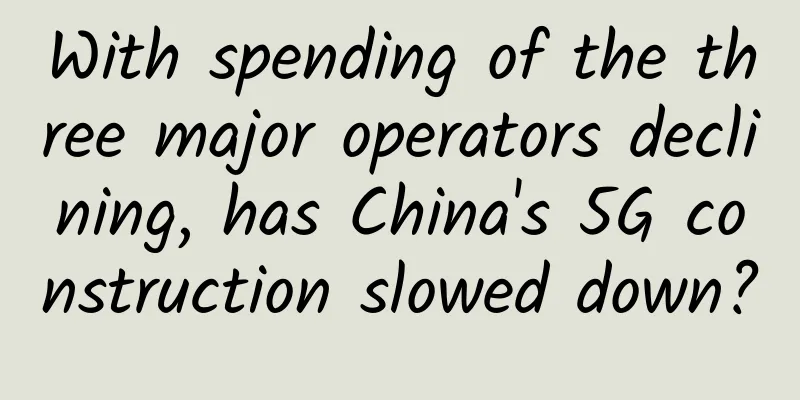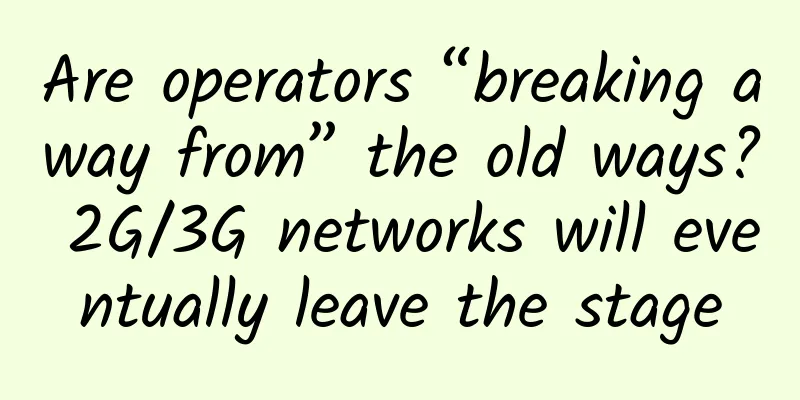Let’s talk about 5G this year

|
Time is like quicksand, and the 2010s are about to pass by before we know it. In a few hours, we will say goodbye to 2019 and usher in 2020. Looking back on the year of communications, there is no doubt that 5G is the hottest keyword. What major events have happened in 5G this year?
Commercial start-up The time was calculated just right, just one hour ahead of the United States. It was so annoying. On April 3, 2019, South Korea's three major operators launched 5G commercial services, making South Korea the first country in the world to commercialize 5G on a large scale. Subsequently, operators in the United States, the United Kingdom, Switzerland and other countries successively launched 5G commercial services. my country's three major operators also officially announced the commercial use of 5G on October 31. As of December, at least 56 operators around the world have launched 5G services. South Korea not only rushed to launch 5G commercial services, but also took the lead in 5G network construction and user development. As of December, South Korea has deployed 180,000 5G base stations and developed 5 million 5G users. In contrast, the United States, which is competing with South Korea for the first launch of 5G, currently has only more than 10,000 5G base stations. It is true that there is no harm without comparison. Although my country's 5G commercial launch was relatively late, the speed of network construction is also amazing. According to information disclosed by the Ministry of Industry and Information Technology, as of December 23, my country has opened 126,000 5G base stations. The "infrastructure maniac" is not a false name. US suppression If AI is the new "electricity", then 5G is the transmission and distribution infrastructure of electricity. 5G is the key infrastructure of the future intelligent society. No one knows what the future of 5G will look like? But the experience of the 2G, 3G and 4G eras tells us that whoever gains the first-mover advantage in the competition for the next generation of mobile networks is likely to be the first to incubate innovative applications that have an impact on the world and occupy the commanding heights of the industry, such as Nokia in the 2G era, Apple and Google in the 3G/4G era. The United States has learned the lesson of lagging behind in 2G, and has also tasted the sweetness of leading in 4G applications. Now that 5G is here, they certainly don’t want to miss it. As early as 2017, they proposed to lead in 5G. However, reality and ideal are always diametrically opposed. Due to weak communication infrastructure, many obstacles in network construction, high labor costs, lack of mid-frequency bands and other reasons, although the United States took the lead in commercial launch of 5G, its actual deployment progress has been very slow. Here is a set of astonishing data: In the 4G era, the number of base stations (macro + micro) in China is more than 14 times that of the United States, and the network density (number of cells/1,000 people) is more than 3 times that of the United States, but the OPEX cost of American operators is more than 18 times that of Chinese operators. (Data source: newstreetresearch) It can be said that China's communications industry is building and maintaining the world's largest and most complex mobile communications network with the highest efficiency and lowest cost. The United States is panicking. How can we compare our efficiency with China's speed? How can we lead in commercial deployment? We will probably be left behind by several blocks. Another thing that frustrates the United States is that the United States no longer has any mobile device manufacturers, while China's equipment manufacturers are already leading the world. In May this year, the United States included Huawei in the "Entity List" in an attempt to suppress a company with the power of one country. Unfortunately, Huawei, which grew up in the midst of gunfire and bullets, did not let the United States succeed. Look at the New Year's speech released by Huawei today: 2019 was an extremely extraordinary year for Huawei. Under the suppression of the US government, all Huawei people rose to the challenge, overcame difficulties together, and focused on creating value for customers. It is expected that the annual sales revenue will exceed RMB 850 billion, an increase of about 18% year-on-year. Although it did not meet the expectations at the beginning of the year, the company's overall operations were stable and basically withstood the test. The fourth largest operator With the advent of the 5G era, the "fourth largest operator" has also surfaced. On June 6, 2019, a very auspicious day, the Ministry of Industry and Information Technology issued 5G commercial licenses to China Telecom, China Mobile, China Unicom, and China Broadcasting Corporation. This means that China has officially entered the 5G era. It also means that China Radio and Television has officially become the fourth largest operator in the 5G era. It was revealed that China Radio and Television will adopt a 700MHz+4.9GHz hybrid network, using 700MHz as the basic coverage layer and 4.9G as the supplementary coverage and capacity layer to build a full-coverage 5G network, and use SA independent networking to support the development of all businesses. In fact, the “fourth largest operator” is not a “Chinese characteristic”. The United States is also planning to establish its fourth largest operator, Dish. Dish has many similarities with China Radio and Television. Its predecessor was a satellite broadcasting service provider. It also has a large number of 600/700MHz low-frequency band resources and plans to adopt a fully cloud-based SA independent network. Another rising star in the communications industry is Japan's fourth largest mobile operator, Rakuten Mobile, which is affiliated with Japanese e-commerce giant Rakuten and was formerly a virtual operator. In January 2019, Rakuten Mobile shocked the global communications industry with a roar. The new operator officially announced that it would build the world's first end-to-end fully virtualized cloud-native mobile communications network. This means that both the core network and the access network will use common hardware and virtualized infrastructure, which means that the operator will say goodbye to traditional CT and fully enter the world of IT and cloud. This deployment method is also a complete subversion of the traditional telecommunications equipment market. It is true that a newborn calf is not afraid of a tiger. Don't underestimate these "fourth largest operators". Not to mention what kind of innovative disruption they will bring, just look at the market competition landscape. Usually, when a market sets up three or four operators, decision makers are thoughtful, careful and cautious, because the intensity of market competition brought about by the four operators is by no means as simple as adding one. Co-construction and sharing It's really strange. On the one hand, the fourth largest operator is being established, and on the other hand, co-construction and sharing are being promoted. What exactly is the telecom industry trying to do? September 9, 2019 is another auspicious day. China Unicom and China Telecom officially announced that they will cooperate to build a 5G access network across the country. This means that the core network will still be built separately, but the 5G wireless access network will be built and shared. China Unicom stated in the announcement that co-construction and sharing will help reduce the costs of 5G network construction and operation and maintenance, and quickly realize 5G network coverage and service capabilities. The joint construction and sharing between China Unicom and China Telecom actually reflects the joint construction and sharing trend of the global telecommunications industry - from passive sharing to active sharing. In the past, the tower model mainly involved the co-construction and sharing of supporting resources such as towers, sites, and computer rooms, which was called passive sharing; while active sharing refers to the sharing of base station active equipment, spectrum resources, and even the entire radio access network (RAN). Just before China Telecom and China Unicom announced the co-construction and sharing of 5G, the multinational telecom giant Vodafone also announced a major event - divesting its tower assets to establish Europe's largest tower company, and taking this as an opportunity to expand co-construction and sharing from passive sharing to active sharing, in order to accelerate 5G construction and optimize costs and investments. To put it bluntly, declining revenue growth, higher network construction costs, and increasingly faster network upgrades have forced operators to jointly build and share networks. In fact, in order to reduce costs, co-construction and sharing are extending beyond industry boundaries. For example, operators or tower companies are cooperating with power grid companies to make full use of abundant power towers, poles, substations and other site resources to build 5G networks; cooperating with municipal and other relevant units to make full use of social resources such as street lights, traffic lights, bus stops, etc. to build 5G base stations; and cooperating with enterprises, factories, shopping malls, etc. to co-construct and share indoor systems. Chip and terminal The rapid development of global 5G is not only due to the readiness of network equipment, but also due to the maturity of chips and terminals. As early as February 2019, Qualcomm, Huawei, MediaTek, Intel, Samsung and Unisoc released 5G baseband chips. After April 2019, as global operators gradually commercialized 5G, Samsung, Huawei, MediaTek and Qualcomm released 5G SoC chips. Thanks to the advancement of 5G chips, the development speed of 5G terminals is much faster than the development speed of terminals before and after the commercialization of 3G/4G. So far, more than 180 5G terminals have been released worldwide. The rapid popularization of 5G terminals will also further promote the construction speed of 5G networks. SA or NSA The most heated debate about 5G this year is, of course, SA or NSA? In fact, these arguments are completely unnecessary. NSA and SA are just two stages of 5G. NSA relies on 4G and does not have a 5G core network, while SA is a brand new 5G from the core network to the access network. NSA focuses on eMBB scenarios, while SA is oriented to all services. In the early days of 5G, since the SA standards and industry were not yet mature, operators naturally chose NSA. For example, South Korea and the United States were the first to launch 5G commercial use, using NSA. As 5G development progresses, the upgrade from NSA to SA is an inevitable trend. For example, Korean and American operators plan to upgrade to SA in 2020. The same is true for my country's three major operators, all of which use SA as their target network architecture. R17 Standard Project If the above is about the past of 5G, now we should talk about the future of 5G. In June 2018, the first version of the 5G standard R15 was frozen; by the first half of 2020, the second version of the 5G standard R16 will also be frozen. So, where will 5G go next? This brings us to the second half of 5G: R17 and R18. At the 86th 3GPP RAN Plenary Meeting held in the beautiful beach town of Sitges, Spain from December 9 to 12, 2019, 3GPP identified more than 30 research and work items including R17. R17 introduced some new technologies, including Sidelink that allows mobile phones to communicate directly with each other, 5G with a frequency band of up to 71GHz, Multi-SIM to improve the eSIM standard, satellite networks that support NR/NB-IoT/eMTC, more accurate 5G positioning, NR-Light that supports more IoT application scenarios, XR, and 5G device energy saving. R17 also further enhances and improves R15 and R16 technologies, such as: IAB (integrated access and backhaul), DSS (dynamic spectrum sharing), MRDC (multi-radio dual connection), FeMIMO (further enhanced MIMO), coverage expansion, etc. In short, R17 not only further improves 5G technology, but also further expands the scope of 5G application innovation. For example, it will create new types of equipment through NR-Light, bring 5G into new fields such as satellites, and make the large-scale Internet of Things and mission-critical service vision proposed in the early days of 5G gradually become a reality. The future of 5G lies in R17. The future of 5G will be in 2020. |
<<: Super detailed explanation of Socket communication principles and examples
>>: Juniper Networks wins two awards at the 14th China Enterprise Annual Selection
Recommend
HostDare: 10% off on CKVM series VPS, Los Angeles CN2 GIA line VPS starting at $44.99 per year
Including the Los Angeles NVMe SSD KVM VPS series...
edgeNAT is 30% off on Double 11, and you can apply for 50% off when you top up 500 yuan. Hong Kong/Korea/US CN2 is available
edgeNAT is a Chinese VPS host established in 2019...
Six requirements for integrating SmartNIC/DPU into existing network infrastructure
The CPU has long been considered the backbone of ...
5G has just arrived, and 6G is on the way...but what will it look like?
[[352946]] On November 13, the website of the U.S...
The Central Cyberspace Affairs Commission: The number of active IPv6 users reached 528 million
Recently, a relevant official from the Cyberspace...
Shenzhou Cloud Technology releases dual-track ultra-high availability architecture to strengthen the foundation of the IT infrastructure
On December 21, 2022, "Architecture Disrupti...
After rejecting Huawei, 5G development in Europe and the United States is suffering. Netizens: They are reaping the consequences
In order to boycott Huawei's 5G equipment, th...
Data Center Strategic Evolution
With the advent of cloud computing, many industry...
Transformation direction and suggestions for my country's operator channel system
At present, my country's communications marke...
VMISS newly launched Korean VPS with 30% discount, 1G memory package starts from 3.5 Canadian dollars (≈ RMB 18) per month
In May this year, we shared information about VMI...
The future development trend of the Internet will transition from HTTP to IPFS
We know that IPFS is a new Internet underlying pr...
Six good habits and 23 lessons that Linux operation and maintenance must know to avoid pitfalls!
I have been engaged in operation and maintenance ...
SD-WAN vs. SASE? No!
The canonical definition of SASE includes five fu...
RAKsmart cluster server starts from $142/month, available in Los Angeles/San Jose/Japan/Hong Kong data centers
Last week we shared RAKsmart's year-end VPS h...









